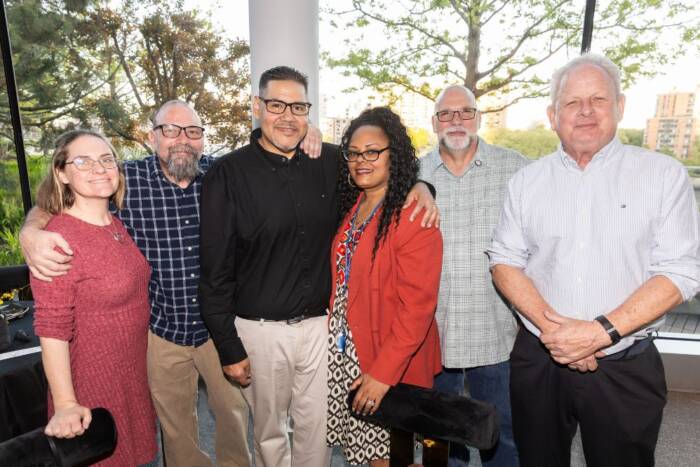Neuroscientist Mary Hynes named research associate professor
Marc Tessier-Lavigne’s arrival at Rockefeller means the addition of not one, but two active neuroscience research programs to campus. This summer, Mary Hynes — Dr. Tessier-Lavigne’s wife and a well regarded neuroscientist in her own right — will relocate from Stanford. As research associate professor, she will investigate the development of the key cells targeted by Parkinson’s disease: dopaminergic neurons.
Dr. Hynes and colleagues were the first to show that dopaminergic neurons are induced by a molecule called Sonic hedgehog. Her work led to a widely used method involving a combination of this and other molecules to derive dopaminergic neurons from embryonic stem cells. Her research at Rockefeller will focus on identifying molecular markers that distinguish the two types of dopaminergic nerve cells, substantia nigra neurons, which are involved in motor control and die in Parkinson’s disease, and ventral tegmental area neurons, which are part of a reward pathway and are not as affected by the disease. She wants to learn how to tease substantia nigra neurons from embryonic stem cells, and in better understanding their development, inform possible treatments for Parkinson’s.
Substantia nigra and ventral tegmental neurons are closely related and very difficult to parse, especially in early stages of development. Her recent work has found that certain axon guidance cues, molecules that direct the growth of neurons, are expressed in striking patterns around the developing dopaminergic neurons. Using axon guidance receptor expression, guidance cue responsiveness, in utero tract-tracing, laser capture microdissection and microchip array analysis, she hopes to identify markers that distinguish the two key populations of dopaminergic neurons.
The work could lead to methods for specifically inducing and dissecting the development of substantia nigra neurons, and a better understanding of guidance cue responsiveness could be used to improve the targeting of transplanted neurons meant to replace those killed off by Parkinson’s.
“Effective cell replacement therapy will be assisted by the ability to generate exactly the right kinds of dopaminergic neurons. We hope that our work will help accelerate this approach,” says Dr. Hynes.
At Stanford, Dr. Hynes leads a research group in the department of biology. Like her husband, she has experience both in academia and industry. She graduated from the University of Vermont in 1980 with a degree in psychology before taking a fellowship to study electrophysiology at Kyushu National University in Japan. Then she joined an undergraduate mentor who had moved to University of North Carolina at one of the first major interdisciplinary neurobiology doctoral programs in the U.S. She earned her Ph.D. there in 1987 and took a postdoctoral position at Columbia University’s Center for Neurobiology and Behavior, where she and Dr. Tessier-Lavigne first met. In 1991, she joined biotechnology giant Genentech, initially as a postdoc, and then on the scientific staff, eventually becoming head of lab. In the late ’90s, she moved to a biotech startup, where she was associate director of neurobiology through 2002. She joined Stanford in 2003.
“I feel that my science has benefited tremendously from working in both industry and academia,” Dr. Hynes says. “It is the basic science that drives my research program, but my time in industry has helped me understand how to move basic scientific discoveries towards applications that might benefit patients.”
“Scientists from all over the city packed a lecture room here last month to hear Mary Hynes discuss her newest work on cues that guide dopaminergic axons to appropriate targets in the brain,” says Mike Young, vice president for academic affairs. “She also spoke about her stem cell work, which has significant implications for cell replacement therapies. Mary is a great addition to the university’s neuroscience research program and will have a valuable place in the growth of stem cell science on campus.”
Dr. Hynes was born in New York City and grew up in Connecticut, and many of her relatives still live in the region. In the city, her great grandfather, Henry Heide, founded Heide Candy Company, the maker of Jujubes, Jujyfruits and Red Hot Dollars.


